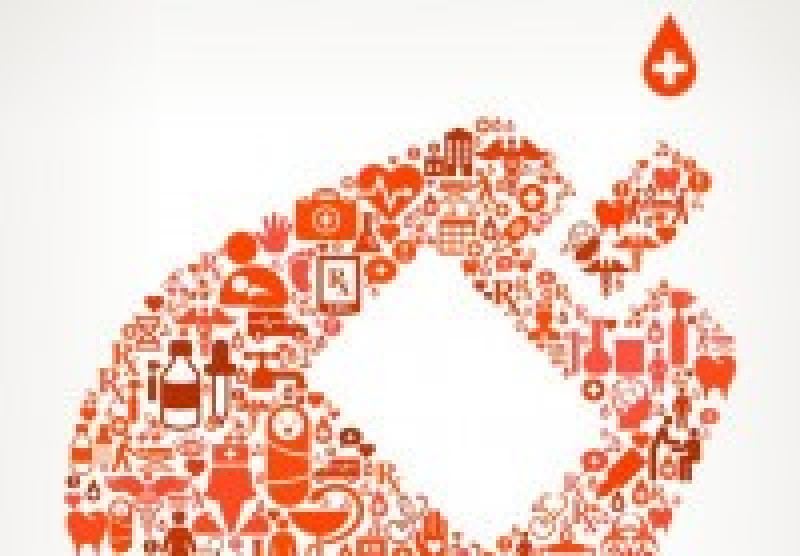
Diabetic Emergencies Study Guide
What happens when the body appropriately regulates blood sugar levels?
Glucose is used in the human body as energy to perform all essential functions. Normally, the pancreas is the major organ responsible for regulating blood sugar levels. When you eat a meal, glucose is transported in the bloodstream signaling the pancreas to release insulin. Insulin aids in moving glucose across the cell membrane where it is used as energy. In addition to the release of insulin, rising blood sugar levels also stimulate the liver to convert glucose to its stored form, glycogen. However, when blood sugar levels drop, signals are sent telling the pancreas to decrease insulin secretion. Instead, alpha cells in the liver will secrete glucagon, ceasing the conversion of glucose to stored glycogen, making glucose available for cellular use. These regulatory and counter-regulatory mechanisms allow the body to remain in homeostasis, however, not everyone has the ability to regulate blood sugar levels normally. Conditions that affect this ability will be discussed below.
Hypoglycemia Explained (Low Blood Sugar)
Type 1 Diabetes
Hypoglycemia is experienced in people with both type 1 and type 2 diabetes. People with type 1 diabetes do not produce insulin. In these patients, hypoglycemia is usually the result of elevated exogenous (def. taken in from outside) insulin from inaccurate dosing, intentional overdose, or a mismatch between carbohydrate intake and insulin dosing.
Type 2 Diabetes
Those with type 2 diabetes are able to make insulin, but their body either does not secrete enough, or they have an increases resistance to it. Medications are given to people with type 2 diabetes to either stimulate increased secretion of insulin, or to improve insulin sensitivity. There is potential for these medications to cause hypoglycemia. An adult patient with a blood glucose level below 60 mg/dL is considered to be hypoglycemic. The signs and symptoms of a patient experiencing hypoglycemia are; hunger, agitation or unusually combative behavior, altered mentation, nausea, weakness, confusion, tachycardia, cool/clammy skin, and seizures. As you can see, the symptoms mainly reflect neurologic changes. The reason for this is while most of the body’s cells can withstand low blood sugar levels for some time, the brain is highly sensitive to the disruptions in glucose levels.
Treating Hypoglycemia
Treatment for patients experiencing a hypoglycemic emergency is dependent on their mental status. The first and least invasive treatment is to have the patient ingest glucose. This can be done by having them ingest oral glucose paste or tablets (depending on what your agency uses). This treatment is depends on the patient’s ability to swallow and maintain their own airway. Placing anything in the mouth of an altered patient carries a high risk of aspiration. Always follow your local protocols, but EMS providers should highly consider NEVER placing glucose tabs or paste in an unconscious patient’s mouth. If the patient is unconscious or cannot maintain their airway, the best treatment is IV dextrose. In this case, it is important to have a patent IV as D50% is hypertonic and will cause tissue necrosis if extravasation occurs. If IV access is inaccessible, and oral glucose is not an option, IM glucagon is the last option. Glucagon initiates the breakdown of glycogen from stores in the liver. Chronic alcoholics, younger patient populations, illness, recent trauma, or those with a history of seizures may not have adequate glycogen liver stores.
Hyperglycemia Explained (High Blood Sugar)
Hyperglycemia at its lower level is represented by blood glucose levels of approximately 250 mg/dL or higher. At this level, it represents no immediate life threats, but over time can cause strain on the cardiovascular system, kidneys, and other organs. Simple hyperglycemia may present with mild symptoms such as: blurred vision, polyuria, polydipsia, polyphagia, orthostatic syncope, frequent infections, and skin ulcerations. Treatment for this is mainly supportive.
Diabetic Ketoacidosis
If blood sugar levels rise above 350 mg/dL, the resulting condition is known as diabetic ketoacidosis. This is a life-threatening emergency that is caused by either the complete absence, or insufficient levels, of insulin. This frequently occurs in a newly diagnosed type 1 diabetic patient who experiences a stressful event in which glycogen is released, but insulin intake is not adjusted accordingly. This results in elevated blood sugar levels and excessive break down of energy stores. The patient then has an increased accumulation of acids, in the form of ketone bodies, ultimately resulting in dehydration as the body attempts to reach a pH balance. The signs and symptoms of DKA are: fruity odor to the breath, dry mucous membranes, orthostatic hypotension, supine hypotension, fatigue, increased thirst, increased urination, increased hunger, tachycardia, abdominal pain, vomiting from the acidosis, altered mental status. You may notice Kussmaul’s respirations (or deep, rapid respirations) due to the body’s attempt to relieve excess CO2 from the acidosis. Patients with type 2 diabetes rarely experience DKA. This is because insulin is still secreted from the pancreas and is enough to prevent the uncontrolled breakdown of glycogen.
Treating Hyperglycemia
Treatment for DKA is fluids and insulin. Patients will most likely be very dehydrated. Unless the patient is hypotensive, fluid replacement should be gradual to prevent complications secondary to overaggressive treatment. 1 to 1.5 L of normal saline is usually given within the first hour. Monitor patients closely to prevent pulmonary edema and transport to the hospital. Usually, fluids replacement is an efficient treatment in the prehospital setting. Once the patient arrives at the ER, insulin can be administered either through a drip or IM injections.
Hyperosmolar Hyperglycemic Nonketotic Coma (HHNC)
HHNC is the result of elevated glucose levels in patients with type 2 diabetes. This results when blood glucose levels reach an excess of 600 mg/dL. The signs and symptoms are similar to DKA, except the onset of symptoms is more insidious compared to DKA. Treatment revolves around ABCs, oxygen, ventilatory support, and fluid resuscitation.
Prescription Medications
For patients with type 1 diabetes, there are many prescription drugs that may be encountered in the field. These are both long and short-acting drugs. Short-acting drugs include: Lispro (Humalog), Aspart (Novolog), and Glulisine (apidra). Long-acting insulins include: Glargine (Lantus) and Detemir (Levemir). Type 2 diabetic prescriptions include: Metformin, Actos, Glucophage, and Glipizide.
- Dozens of courses and topics
- State-specific requirements
- We report to CAPCE in real time


